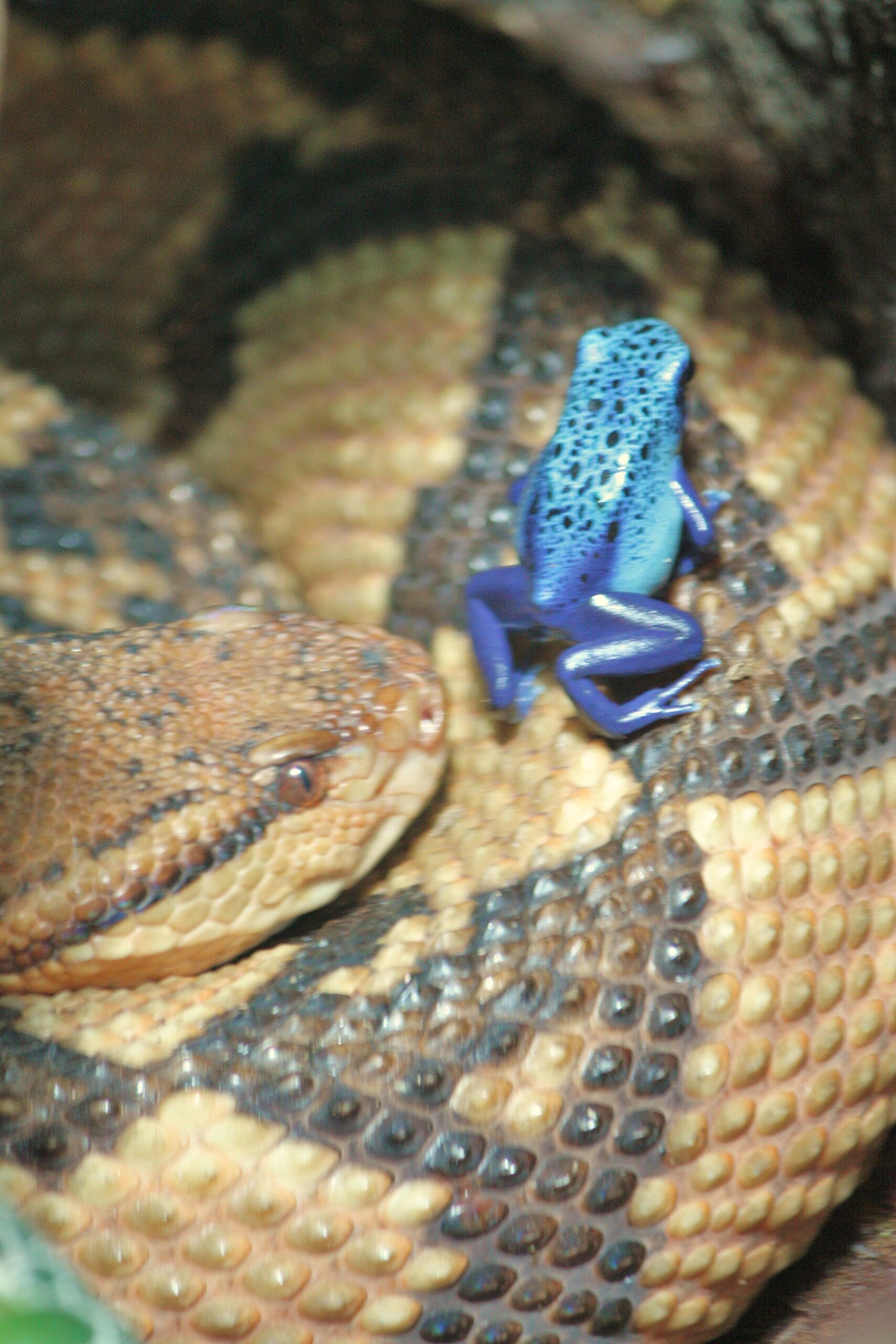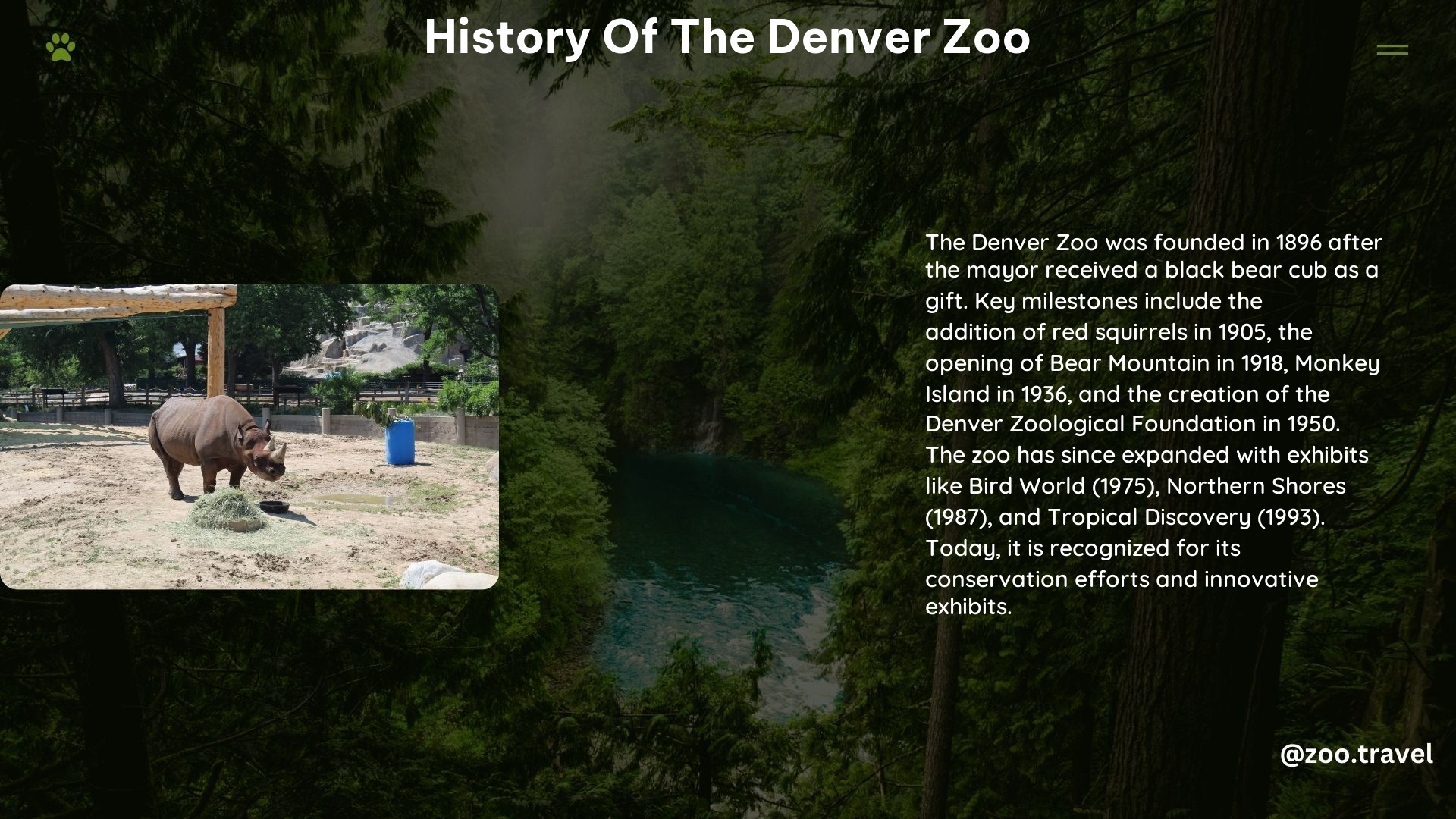The Denver Zoo, located in City Park, Colorado, has a rich history spanning over 125 years. From its humble beginnings with a single black bear to its current status as a renowned conservation and education center, the Denver Zoo has evolved significantly over the decades.
Origins

The Denver Zoo’s story began in 1896 when a black bear named Billy Bryan Bear was given to the mayor of Denver as a gift. The bear was initially tied to a stake in City Park and later relocated to the north side of the park, marking the start of the zoo.
Early Years

In the early years, the zoo’s collection continued to grow. In 1905, a population of red squirrels was added, which rapidly affected the bird population at Duck Lake. The zoo’s first major exhibit, Bear Mountain, opened in 1918. This exhibit featured naturalistic habitats and no bars between visitors and animals, a revolutionary concept inspired by Carl Hagenbeck’s innovative zoo design.
Middle Years
During the 1920s through the 1950s, the Denver Zoo continued to expand. Monkey Island was added in 1936, and the first elephant, Cookie, arrived in 1950. In 1956, the Denver Zoological Foundation signed an agreement with the City and County of Denver to oversee the administration, management, and development of the zoo. The zoo’s first Master Plan was released in 1959, guiding future enhancements.
Modern Era
The 1970s and 1980s saw the opening of new exhibits, including Bird World in 1975 and Northern Shores in 1987. The 1990s brought the Tropical Discovery exhibit in 1993, and the zoo achieved ISO 14001 certification in 2009, recognizing its commitment to environmental management. In the 2000s and 2010s, the zoo continued to evolve, with the opening of Elephant Passage in 2012 and the celebration of its 125th anniversary in 2021.
Conservation Efforts
The Denver Zoo is an active participant in the Association of Zoos and Aquariums (AZA) Species Survival Plan, working with conservationists globally to protect endangered species, such as the Lake Titicaca frog and the boreal toad.
Current Status
Today, the Denver Zoo is an eighty-acre campus with over 3,700 animals from more than 600 species, attracting over 2 million visitors annually. The zoo continues to evolve, with ongoing projects and a focus on education, conservation, and innovative exhibits.
Key Figures
Several key figures have played significant roles in the history of the Denver Zoo:
- Carl Hagenbeck: A German animal trader and trainer who introduced the concept of naturalistic habitats without bars, influencing the development of the Denver Zoo.
- Helen Johnson: Longtime board chair (1957-1978) who played a significant role in the zoo’s professionalization and focus on education and conservation.
- Clayton Freiheit: Director (1970-2007) who oversaw significant growth and innovation at the zoo.
References
- https://coloradoencyclopedia.org/article/denver-zoo
- https://denverzoo.org/history/
- https://www.amazon.com/Denver-Zoo-Centennial-History/dp/157098039X
- https://en.wikipedia.org/wiki/Denver_Zoo
- https://www.zippia.com/denver-zoo-careers-724711/history/
